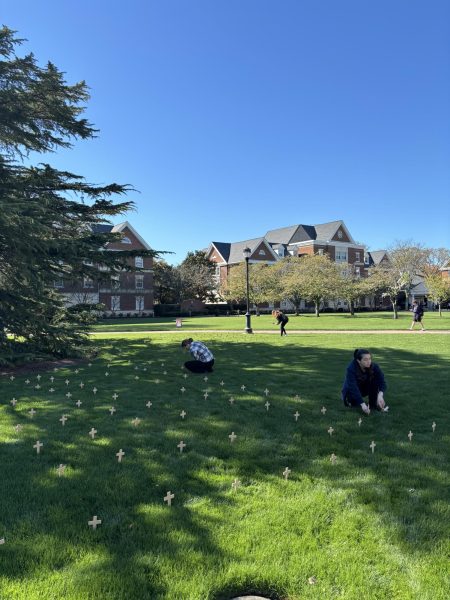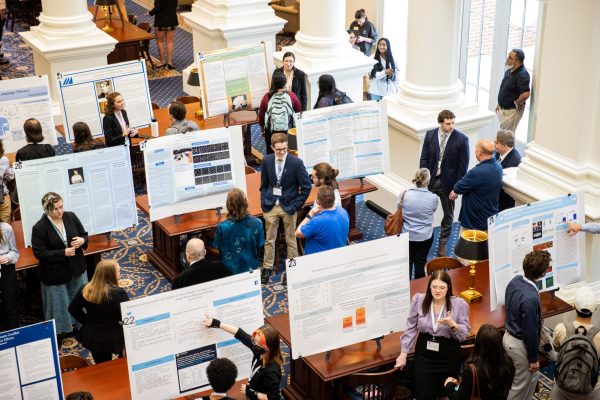What is ChatGPT and Why is Everyone Talking About It?
How this AI Program will change the classroom experience and what educators are going to do about it
If you are a student or an educator, then chances are you’ve heard of OpenAI’s ChatGPT. According to OpenAI’s website, ChatGPT is an AI program that can respond and interact with users through “reinforcement learning.” A user can pose a query or prompt and ChatGPT will generate a detailed response in paragraph format.
When asked how ChatGPT would describe itself to someone who has never used it and isn’t familiar with AI, it responded, “Think of it like a chatbot that you can talk to, but with advanced technology that allows it to understand and respond to your questions and statements in a more human-like way… Its responses are generated based on its analysis of vast amounts of text data, so it has the ability to understand language and learn from its interactions with people.”
However, as stated on OpenAI’s website, there are limitations to ChatGPT’s functionality. For instance, the AI program’s answers sometimes don’t make sense or are incorrect,
In an educational setting, ChatGPT can be used to generate essays or answer open-ended writing assignments. This poses a huge concern for educators who worry that their students may use ChatGPT to assist them with their schoolwork.
There are also privacy concerns given that ChatGPT collects its user’s private information, like IP addresses and location, according to U.S. News and World Report. Although users must be 18 years old to use the AI program, ChatGPT does not confirm the age of its users.
USA Today reports that the Los Angeles Unified school District temporarily banned access to ChatGPT and the New York City Department of Education did the same for school-owned devices and networks. Other districts and areas have followed, citing concerns about student use of the program going undetected. In contrast, according to USA Today, school systems like Miami-Dade have held off on the decision to officially ban ChatGPT.
Many educators have openly embraced ChatGPT as a classroom tool, even incorporating its use into their assignments. For example, a fifth grade teacher from Lexington, Kentucky told PBS that he used ChatGPT in a “Find the Bot” writing game with his students in which they wrote summaries on the same topic and tried to identify which summary was written by AI.
The response to ChatGPT on the collegiate level has been different, with concerns of plagiarism and cheating. A study conducted by Intelligent magazine in January 2023 surveyed 1,000 different college students, revealing that 30% of the respondents use ChatGPT on their written homework. ¾ of the ChatGPT users believe that it is cheating, but still utilize the tool anyway. Of those surveyed, 46% said that their university or professors had banned use of the AI program for homework.
Despite studies, like the one conducted by Intelligent, not many colleges have outright banned use of the AI program. Instead, many professors are adjusting their classroom policies to reflect their stance on ChatGPT.
In a crowdsourced classroom policies document found on The Chronicles of Higher Education, educators from all over the country can share their updated policies on AI generative tools. The document includes contributing educators from schools like University of California, Santa Cruz, Clemson University and George Washington University.
The document was created by Lance Eaton, the Director of Digital Pedagogy at the nonprofit, College Unbound. Some policies completely ban the use of AI sources or “discourage” it. While other policies state that students must cite contributions from AI sources.
One educator from University of Pennsylvania, noted in their policy that students are free to use AI programs (as long as they clarify their use of the program), but they are responsible for any false, biased, or offensive content that they submit. Another educator from University of Massachusetts Lowell, actually used ChatGPT to help them generate their policy on AI use in class.
ChatGPT has sparked so much debate over its use in classrooms that some have even started developing programs to detect when a student has used ChatGPT on their assignments. According to NPR, a senior student at Princeton University created GPTZero to identify whether or not a text was written by AI or humans.
This student, Edward Tian, a computer science major, minoring in journalism, tweeted on Jan. 2, 2023, about his new app, “the motivation here is increasing AI plagiarism. think are high school teachers going to want students using ChatGPT to write their history essays? likely not.”
Over 30,000 people used GPTZero within the first week of its release, and in addition, OpenAI is looking at methods of watermarking their work, reports NPR.
Despite programs like GPTZero and many professor’s efforts to restrict AI use, New York Times technology columnist, Kevin Roose, argues that banning ChatGPT is not the answer.
Roose points out that banning the program from school devices and networks won’t be very effective when students can simply use ChatGPT on their personal devices. Also, programs like Tian’s can easily be outsmarted by making slight changes to phrasing. Other programs like ChatGPT are sure to pop up on the market as well, offering even less traceable options to students, says Roose. He also questions how much time a teacher will want to dedicate towards identifying AI created work. Most teachers already have their hands full with regular assignments and homework grading.
In addition, Roose presented various ways that teachers themselves can utilize ChatGPT for outlines, lesson plans, making quizzes, debate partners etc.
Roose concluded by writing, “[Students] need to know their way around these tools — their strengths and weaknesses, their hallmarks and blind spots — in order to work alongside them. To be good citizens, they’ll need hands-on experience to understand how this type of A.I. works, what types of bias it contains, and how it can be misused and weaponized.”
Your donation will support the student journalists of Christopher Newport University. Your contribution will allow us to purchase equipment and cover our annual website hosting costs.





